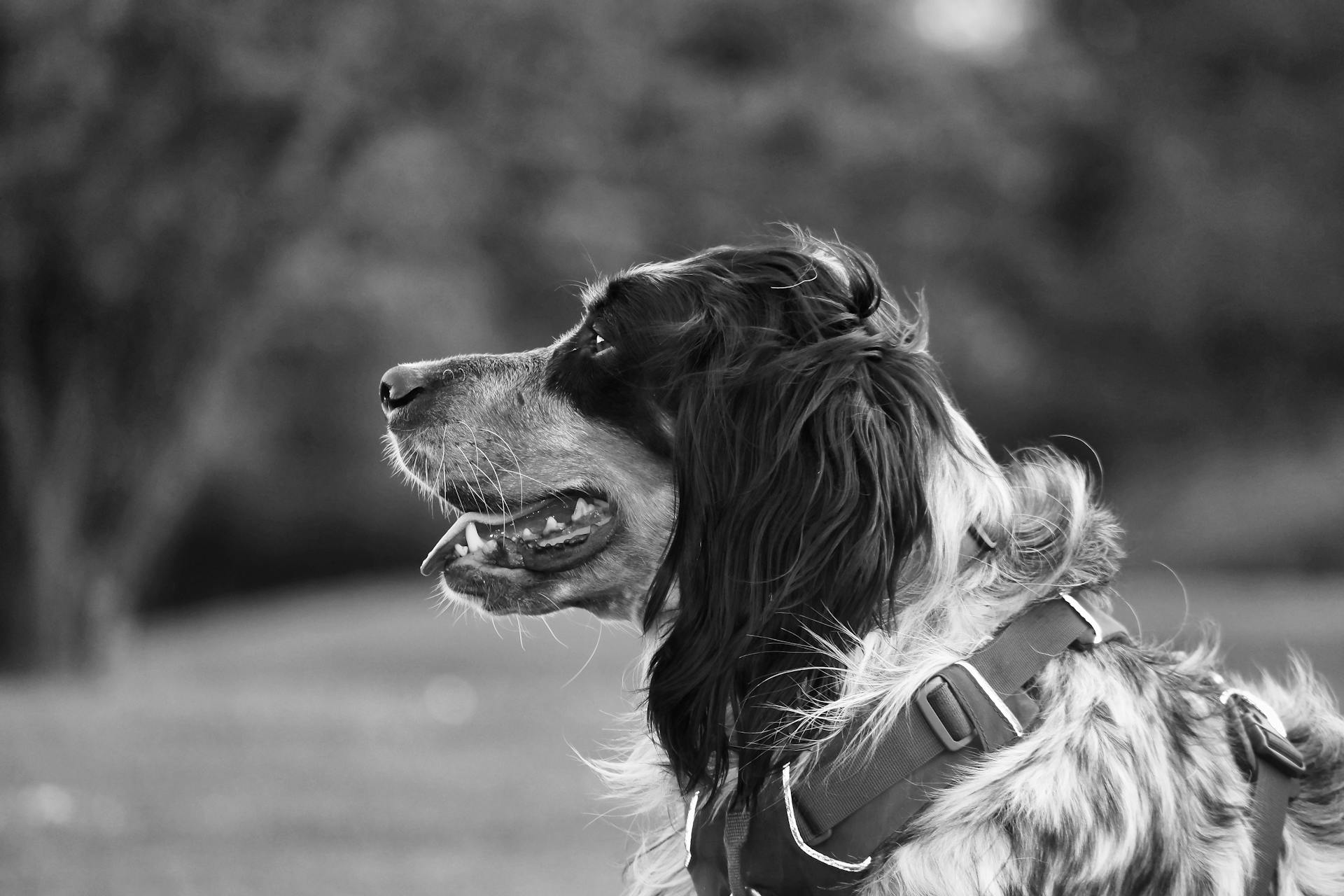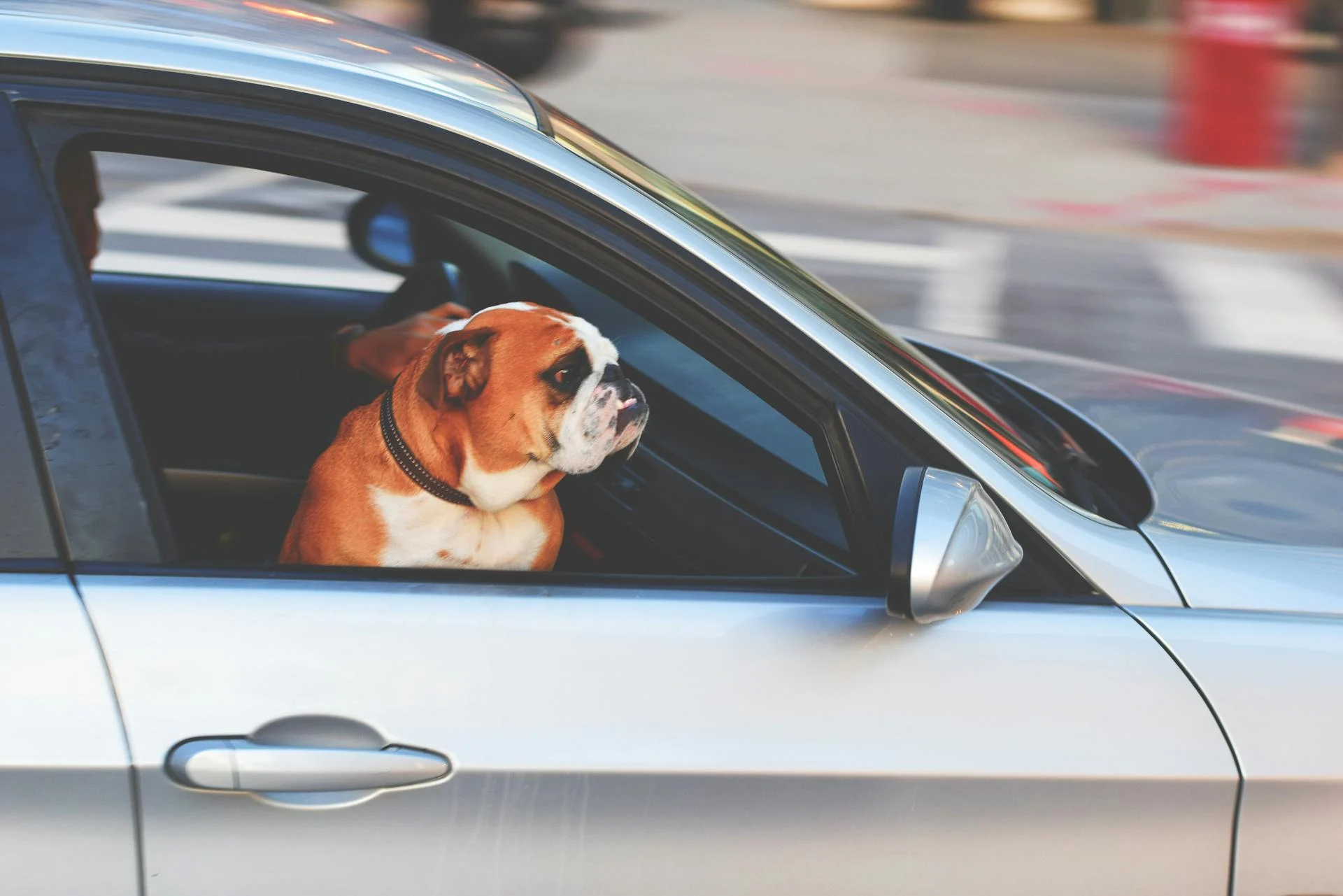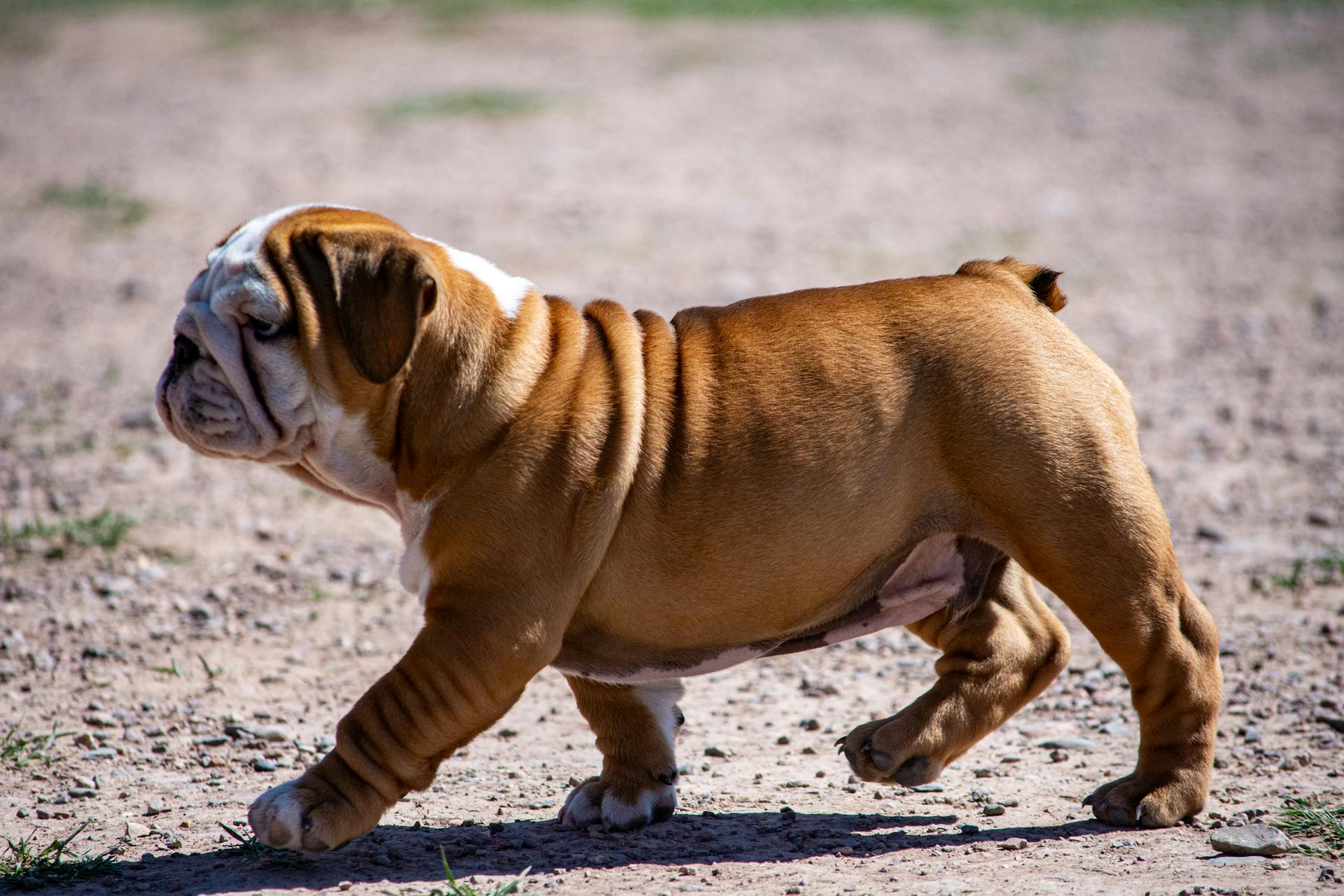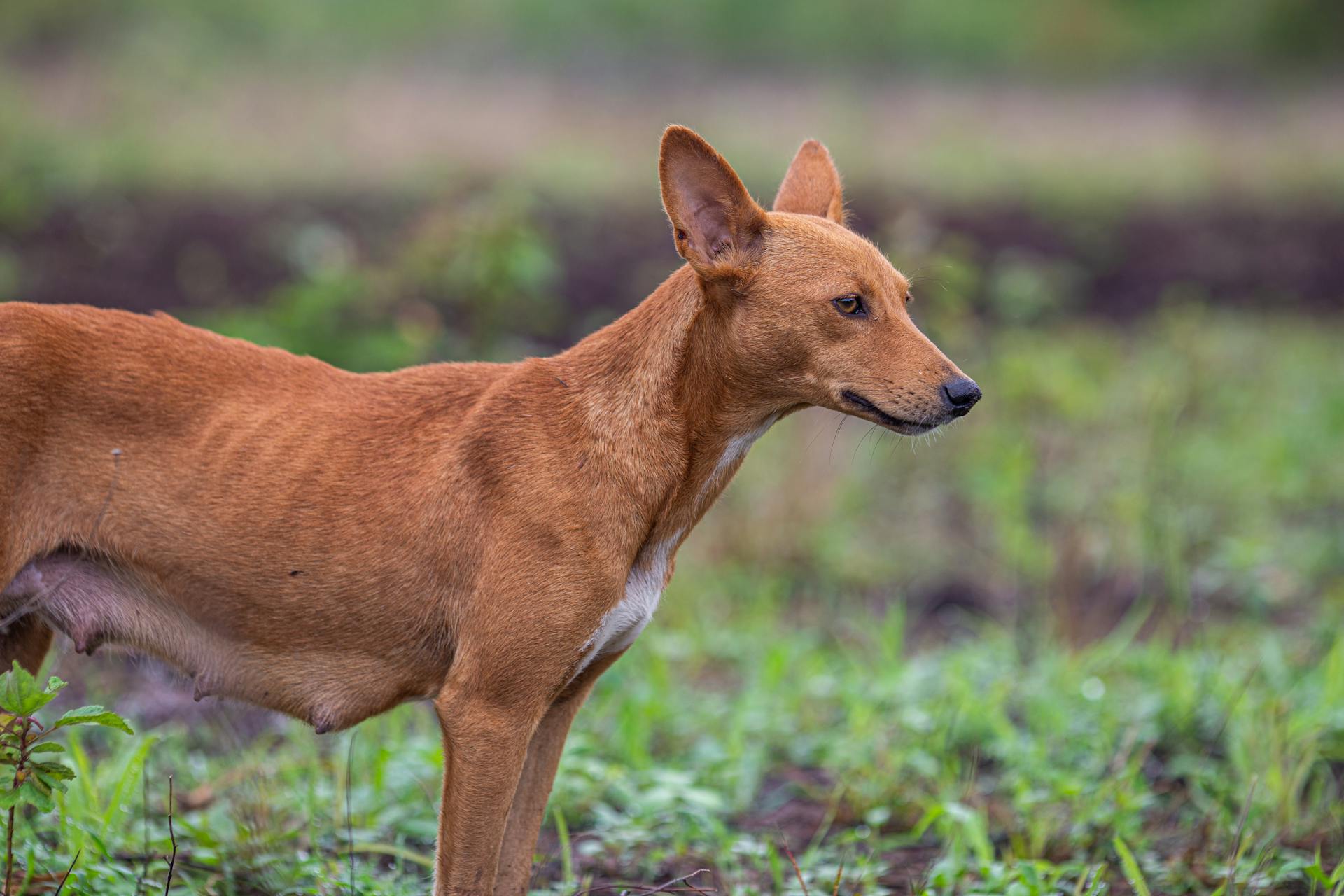
Welcoming a new English Mastiff puppy into your family can be a thrilling experience, but it's essential to prepare for the challenges that come with caring for a pregnant English Mastiff.
English Mastiffs are known for their large size, and pregnant females can weigh up to 160 pounds, making them prone to joint issues and mobility problems.
Plan for a spacious living area, ideally with a large yard, to accommodate your dog's growing needs.
As English Mastiffs are prone to hip dysplasia, ensure your home is dog-proofed to prevent injuries.
English Mastiffs are also known for their short coats, which require minimal grooming but may shed heavily during pregnancy.
Regular veterinary check-ups are crucial to monitor the health of both the mother and the puppies.
See what others are reading: English Mastiff Large
Signs of Pregnancy
As you may have noticed, pregnant English Mastiffs go through a range of physical and behavioral changes that can indicate they're expecting puppies.
One of the earliest signs of pregnancy is an increase in appetite. A pregnant English Mastiff will want to eat more than usual, so her diet will need to be upgraded to support the growing babies inside her womb.
A change in nipple size is another indicator of pregnancy. Compared to flat areolas, a pregnant English Mastiff's nipples will gradually turn larger and discolored, indicating an increase in blood flow.
A swollen belly is a clear sign that your Mastiff is pregnant. The intensity of her belly's swelling will grow as days and weeks pass by, and you may even notice her pups moving inside her belly at the last two weeks of her pregnancy.
Weight gain is another noticeable sign of pregnancy, usually becoming apparent after 21 days into pregnancy. This will depend on the size of the litter she's carrying.
A pregnant English Mastiff may become more affectionate and clingy, but some may also be quiet, moody, or withdrawn. Irritability is also common as she nears her due date, often accompanied by nesting behavior and a preference for solitude.
Here are some common signs to look out for:
- Increased appetite
- Change in nipple size
- Swollen belly
- Weight gain
- Affectionate or clingy behavior
- Irritability and nesting behavior
Keep in mind that some of these signs can also indicate illness, so it's essential to have any marked change in appearance, appetite, or activity level checked out by a vet.
Preparing for Pregnancy
If you suspect your English Mastiff is pregnant, it's essential to prepare for the arrival of her puppies. The first sign of pregnancy is often lethargy and decreased activity, which can be accompanied by changes in appetite and behavior.
To confirm pregnancy, you can take your Mastiff to the vet for an abdominal palpation test 28 to 30 days after ovulation. This test is suitable for cooperative female English Mastiffs, but can be challenging due to their large size.
Here are the key tests to confirm pregnancy:
- Abdominal palpation (28-30 days after ovulation)
- Pregnancy test (21-28 days after mating)
- Ultrasound (20-30 days post-breeding)
- Radiographic diagnosis (42-55 days after mating)
These tests can help determine if your Mastiff is carrying little pups inside her, and will also help you prepare for the arrival of her babies.
Decreased Activity
Decreased Activity is a common sign of pregnancy in dogs. If your dog easily becomes exhausted or is spending more time napping, it may indicate that she is pregnant.
For dogs that are typically energetic, this decrease should be taken seriously. If your dog is normally a ball of energy, but now seems to be lagging behind, it could be a sign that she's expecting.
Expand your knowledge: Big Dogs English Mastiff
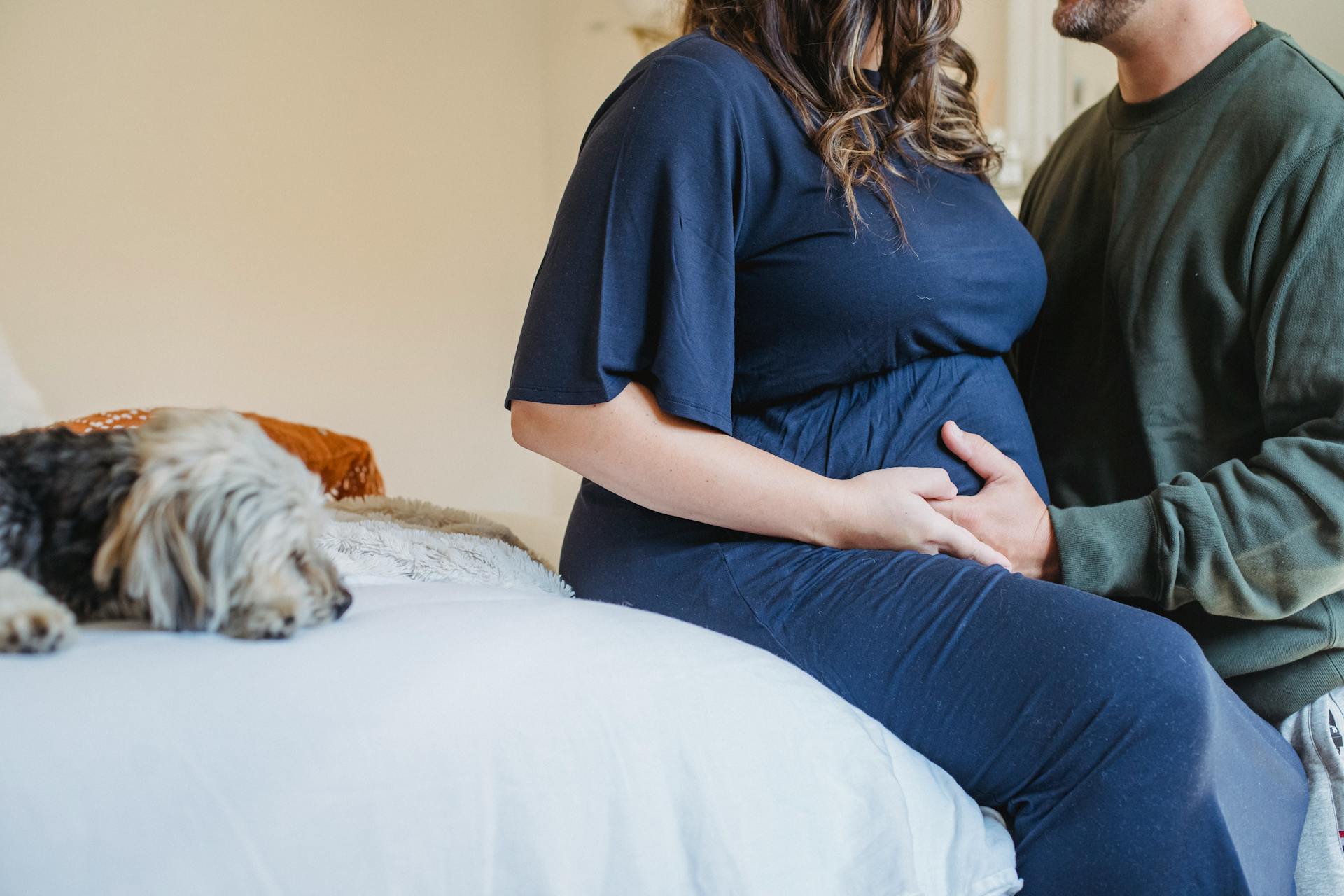
Try paying closer attention to how quickly she tires during walks. If she's normally able to run around for hours, but now needs to stop and rest after just a short distance, it may be a sign of pregnancy.
Here are some signs to look out for:
- Lethargy and decreased activity
- Weigh gain and abdominal enlargement
Keep in mind that some dogs may be naturally more laid back, so it's essential to pay attention to any changes in behavior. If you're unsure, it's always best to consult with your vet.
Changes in Appetite
As your dog's pregnancy progresses, you'll likely notice changes in her appetite. She may eat less or even vomit occasionally, similar to morning sickness in humans. This is usually an early sign of pregnancy, around 30 days after mating.
Her appetite may also fluctuate in the second half of pregnancy, increasing to accommodate the growing puppies. Be prepared to change her diet accordingly, as she'll need more food to support her growing family.
Some pregnant dogs may eat more than usual, wanting to snack throughout the day. This is completely normal, as she's preparing for the arrival of her puppies.
Here are some key facts about changes in appetite during pregnancy:
- A pregnant dog's appetite can fluctuate, with some eating less or vomiting occasionally, while others may eat more than usual.
- She may vomit a little in the early stages of pregnancy, similar to morning sickness in humans.
- Her appetite may increase in the second half of pregnancy, so be prepared to change her diet accordingly.
- She may want to snack more throughout the day, especially as her tummy grows.
Keep an eye on your dog's appetite and adjust her diet as needed. If you have any concerns, always consult with your vet for personalized advice.
3. Unusual Behavior
As you prepare for your dog's pregnancy, you may notice some unusual behavior. A pregnant dog may seek the comfort of her owner more often, spending more time at your side and looking for extra attention.
Some pregnant dogs, however, may seek isolation and not wish to be bothered, seeming depressed or even irritable when given attention. This is a normal part of the pregnancy process, but it's essential to respect your dog's boundaries.
You may also notice a change in your dog's appetite, which can increase in the second half of pregnancy, so be prepared to change her diet accordingly. This increase in appetite can be a good sign that your dog is getting the nutrients she needs for a healthy pregnancy.
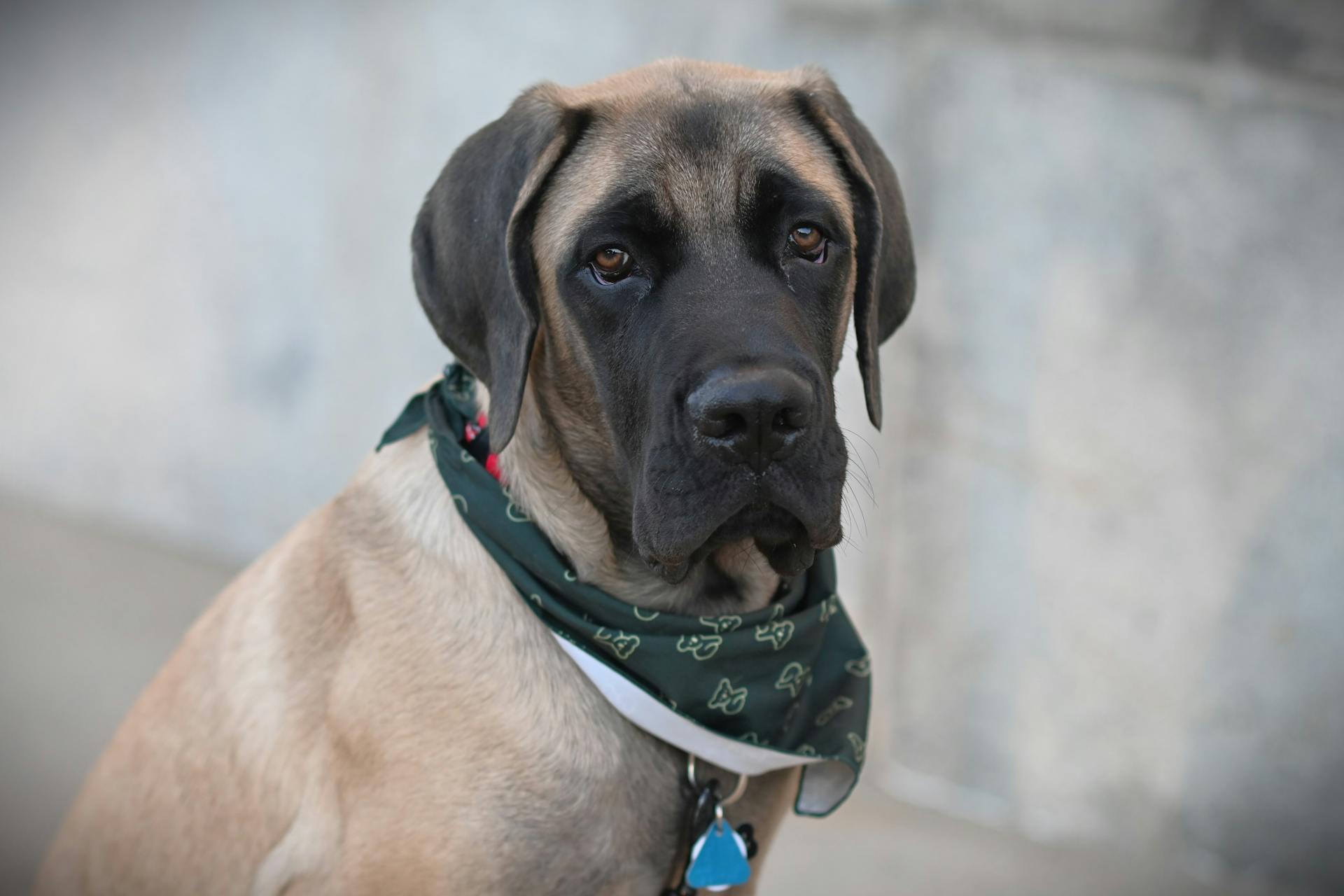
Here are some common signs of a pregnant dog's unusual behavior:
- Seeking comfort and attention from her owner
- Seeking isolation and not wanting to be bothered
- Seeming depressed or irritable when given attention
Keep in mind that every dog is different, and what may be normal for one dog may not be normal for another. If you're concerned about your dog's behavior or overall health, it's always best to consult with your veterinarian for personalized advice.
Ways to Check Your English Mastiff's Health
If your English Mastiff is pregnant, it's essential to monitor her health closely. A pregnant dog's body undergoes many changes, and regular check-ups with your vet will help ensure a healthy pregnancy.
Abdominal palpation is a test that can be done 28 to 30 days after ovulation to check for pregnancy. This test is suitable for cooperative female English Mastiffs, but it can be challenging due to their large size.
Your vet can perform a pregnancy test 21 to 28 days after your Mastiff is mated to determine if she produces the relaxin hormone. However, this test can draw a negative result, so it's best to take it with other tests or retake it 7 or 10 days later.
Ultrasound is a common method breeders use to check for pregnancy. This test can be done 20 to 30 days post-breeding and can detect heartbeats from the womb, but it's not an accurate tool to count the puppies.
Regular vet visits are crucial for a pregnant English Mastiff's well-being. Your vet can check the progress of her pregnancy and suggest beneficial methods, such as deworming her on the 40th day of gestation and under 14 days post-whelping.
Here are some key dates to keep in mind for your English Mastiff's pregnancy:
- 28 to 30 days after ovulation: Abdominal palpation test
- 21 to 28 days after mating: Pregnancy test
- 20 to 30 days post-breeding: Ultrasound test
- 40th day of gestation: Deworming
- 42 to 50 days after mating: Radiographic diagnosis of pregnancy
- 55 days after first breeding: Accurate count of puppies
English Mastiff Litter Size
An English Mastiff's litter size can be quite unpredictable, but generally speaking, the average number of puppies is around 8.
The age of the dam plays a significant role in determining litter size. Generally, the older she is, the smaller her litter size will be.
You can expect a litter size of up to 16 puppies if your English Mastiff is bred at a young age.
Ideally, a female Mastiff can be bred once she's 22 months old, which is when she's already mature enough to give birth.
You might enjoy: How Big Are Mastiffs
When to Get Pregnant?
Dogs can get pregnant when they come into season, which happens about once every eight months.
This fertile period, also known as 'being in heat', lasts for up to three weeks.
During this time, your dog may get into altercations with males if they don't feel quite ready to mate.
Pregnancy Diagnosis and Confirmation
If your English Mastiff is suspected to be pregnant, a veterinarian will perform an ultrasound to confirm pregnancy. This can be done from day 20-22 of pregnancy, and it's a sure way to confirm pregnancy as long as she's 2 or more weeks pregnant.
A veterinarian can also confirm pregnancy with a dog pregnancy test, which measures hormone levels from days 21-25 of pregnancy.
Your vet can also count the number of puppies by performing a physical examination from around day 30 of pregnancy. However, this may not always be accurate, so be aware that you could have more puppies on the way than you thought!
Here are the methods your vet can use to confirm pregnancy in your English Mastiff:
- Ultrasound (from day 20-22)
- Dog pregnancy test (from days 21-25)
- Physical examination (from around day 30)
Pregnancy Stages and Labor
As the due date nears, your pregnant English Mastiff will start showing signs of labor. She'll often avoid eating a few days before giving birth and may start nesting, so providing a whelping box can help her feel more comfortable.
English Mastiffs will pant heavily when they're about to give birth, and abdominal contractions will start to show. These contractions can lead to the birth of a puppy within the first hour, and all puppies will be covered in a membrane that needs to be licked off by the mother.
If the mother doesn't lick off the membrane, you'll need to do it yourself to help the puppy breathe. Clean the puppy with a towel and rub him gently until you hear him cry.
For your interest: Black English Mastiff Puppy
Weight Gain and Abdominal Enlargement
Weight gain and abdominal enlargement are two of the most noticeable signs of pregnancy in dogs. A pregnant dog's abdomen will expand in size as the puppies grow, which can be one of the clearest indicators of pregnancy.
This enlargement of the abdomen usually occurs relatively late into pregnancy, around the 40-day mark. By this time, the belly will have been noticeably expanding for around three weeks.
The weight gain is not limited to the abdomen, but also around the waist. This is completely normal, as the dog is making more room for her puppies.
Here are some key facts about weight gain and abdominal enlargement:
- A pregnant dog tends to gain weight around her stomach and waist during the 2nd or 3rd week of pregnancy.
- Added weight usually becomes noticeable after 21 days into pregnancy.
Keep in mind that weight gain and abdominal enlargement can also be caused by other factors, so it's essential to consult with a veterinarian to confirm pregnancy.
Affectionate or Irritable
As your dog's pregnancy progresses, you may notice a change in her behavior. Some dogs become more affectionate and attention-seeking, while others shy away from pets and cuddles. This is a normal part of pregnancy, and it's all about her personality.
Your dog may become more clingy and loving, which can be a sign that she's pregnant. Her hormone levels will change, causing her mood to shift towards you. Some pregnant dogs can be quiet, moody, or withdrawn, so it's essential to get to know your dog's personality.
As your dog nears her due date, she may become more irritable. This is a common sign that labor is approaching. She may also exhibit nesting behavior, preferring to be alone and more restless.
Here are some common behavioral changes you might notice in your pregnant dog:
- More affectionate and attention-seeking
- Quieter, moodier, or withdrawn (in some cases)
- Irritable and restless (as she nears her due date)
Remember, every dog is different, and her behavior will depend on her personality. If you're concerned about your dog's behavior or overall health, it's always best to consult with your vet.
Physical Examination
A physical examination is a crucial step in determining whether your dog is pregnant. A veterinarian will most likely do a palpation test to check for pregnancy, which is a painless examination where they feel the outside of your dog's belly with their forefingers.
This helps them examine the womb and feel the outline of the potential puppies. The veterinarian will use this test to determine if your dog is indeed pregnant.
In some cases, an X-ray of your dog's stomach can be used to help veterinarians count the number of puppies.
Broaden your view: English Mastiff Puppy
Signs of Labor
As the due date nears, your pregnant English Mastiff will exhibit certain signs that indicate labor is approaching.
She may stop eating a few days before giving birth, so make sure to monitor her food intake.
Your English Mastiff will start nesting, and providing a whelping box will help her feel more comfortable and secure.
She'll pant heavily, which is a clear indication that she's about to give birth at any moment.
Abdominal contractions will start to show, and a puppy may be delivered at the first hour.
The mother will lick off the membrane covering each new puppy, but in some cases, you may need to do this yourself to help the pup breathe.
Clean the puppy with a towel and rub him until you hear him cry.
The umbilical cord needs to be cut off and tied an inch from the belly, and the abdomen should be lathered with iodine to lower the risk of infection.
Make sure to give the mother fresh water during the process.
Once all the pups are born and clean, place them along the mother's belly and ensure everyone is nursing.
Discover more: English Mastiff Brindle Puppy
Nesting and Preparation
As your English Mastiff's pregnancy progresses, you may notice her start to prepare for the arrival of her puppies. This is a natural behavior, and it's essential to provide her with a comfortable and safe environment.
A common sign of nesting behavior is your dog gathering blankets, shredding paper, or bunching together bedding or clothing to make a warm nest for her puppies. This usually occurs in the last few weeks of pregnancy, and it's a good indication that whelping (giving birth) is imminent.
To create a suitable nest for your dog, you can provide her with a quiet, warm area where she can feel safe and comfortable. This could be a secluded spot in your home, such as a laundry room or a bedroom. Make sure it's free from drafts and noise.
Some essential items to have on hand for whelping include a whelping box, newspapers to line the box, clean and dry towels for the puppies, and sterilized scissors to cut the cord. Here are some things to have in your whelping care supplies:
- A whelping box
- Newspapers to line for the whelping box
- Clean and dry towels for the puppies
- Sterilized scissors to cut the cord
- Clean and unwaxed dental floss to tie the umbilical cord
- Iodine (Betadine)
- Bulb syringe to clean puppy’s nose and mouth
Whelping Care Supplies
As you prepare for the arrival of your English Mastiff's puppies, it's essential to have the right supplies on hand. A whelping box is a must-have, and it's best to line it with newspapers to make cleanup easier.
You'll also need clean and dry towels for the puppies, as they'll need to be dried off after birth. Sterilized scissors are necessary for cutting the umbilical cord, and clean and unwaxed dental floss can be used to tie it.
Iodine (Betadine) is also a crucial item to have on hand, as it can help prevent infection. A bulb syringe can be used to clean the puppies' noses and mouths.
Here's a list of essential whelping care supplies to get you started:
- A whelping box
- Newspapers to line the whelping box
- Clean and dry towels for the puppies
- Sterilized scissors to cut the cord
- Clean and unwaxed dental floss to tie the umbilical cord
- Iodine (Betadine)
- Bulb syringe to clean puppy’s nose and mouth
What to Do When Your Pet Delivers Puppies/Kittens
Your pet will likely give birth to their puppies or kittens smoothly, but it's essential to be prepared and know what to look out for. Your dog will give you plenty of hints to let you know their labour is beginning and the pups are on their way.
Create a 'nest' in a secluded, warm area for your dog to give birth, as they may look for somewhere quiet to do so. This can help them feel more comfortable and secure.
In most cases, you shouldn't have to interfere with the birthing process, but if you notice signs of complications, such as discoloured discharge or mum straining without producing pups, contact your vet immediately.
Nesting Behaviors
As your dog's pregnancy progresses, you may notice a sudden change in her behavior - she starts to prepare for her puppies' arrival by gathering materials to create a cozy nest. This is a normal and exciting milestone in her pregnancy.
Dogs typically begin to exhibit nesting behavior during the last few weeks of pregnancy, which can last anywhere from 56-70 days. This is a relatively short gestation period compared to humans.
Your dog may start shredding bedding, paper, or clothing to create a warm and comfortable space for her puppies. She may also become irritable and reclusive, so it's best to limit her contact with small children during this time.
Here are some common signs of nesting behavior in dogs:
- Gathering blankets or bedding to create a nest
- Shredding paper or clothing
- Bunching together bedding or clothing to make a warm nest
Keep in mind that not all dogs exhibit nesting behavior, but if your dog starts doing this out of the blue, it's likely a sign that she's preparing to give birth.
Pregnancy Timeline and Planning
Pregnancy in English Mastiffs can be a bit tricky to detect, but once you know what to look for, it's actually quite exciting. A pregnant English Mastiff typically doesn't show physical signs of pregnancy until around day 40, when her belly will start to noticeably expand.
Around this time, her nipples will also enlarge and may even leak milk in the final week of pregnancy. This is a normal and reassuring sign that she's on track to give birth to adorable puppies.
If you're wondering how to confirm pregnancy in your English Mastiff, there are a few methods you can use. Abdominal palpation, or a belly check, can be done 28 to 30 days after ovulation, but it's best suited for cooperative dogs. Nervous dogs, like some English Mastiffs, may have tense abdomens and make it harder to detect pregnancy.
Relaxin hormone testing can be done 21 to 28 days after mating, but be aware that it can produce a false negative result. This is why it's often used in combination with other tests or repeated a week or two later.
Ultrasound is a more reliable method, and it can detect heartbeats from the womb as early as 20 to 30 days post-breeding. This is a great way to confirm pregnancy and get an idea of the number of puppies on the way.
Here's a rough timeline of what to expect during an English Mastiff's pregnancy:
Keep in mind that radiographic diagnosis, or an X-ray, can be done 55 days after first breeding for an accurate count of puppies, but it's not necessary if you're already using other methods to confirm pregnancy.
Frequently Asked Questions
What does a pregnant mastiff look like?
A pregnant mastiff typically shows noticeable physical signs around day 40, including a visibly expanding belly and enlarged nipples, which may leak milk in the final week of pregnancy
How many puppies do English mastiffs have?
English Mastiffs typically have 8 puppies per litter, with up to 10 possible. This breed's litter size is relatively consistent, making them a popular choice for many dog owners.
How long does it take for an English mastiff to have puppies?
The gestation period for English Mastiffs is approximately 63-65 days from conception. However, determining the exact conception date can be challenging, making it difficult to pinpoint the exact due date.
What to do when your dog is pregnant for the first time?
When a dog is pregnant for the first time, focus on providing proper nutrition and regular veterinary check-ups to ensure a healthy pregnancy and delivery. During the first couple of weeks, it's essential to create a comfortable and safe environment for the mother-to-be.
Sources
- https://animals.mom.com/signs-a-mastiff-is-pregnant-12579523.html
- https://www.pawcited.com/how-long-are-english-mastiffs-pregnant/
- https://www.noahsarkvet.com/6-signs-of-pregnancy-in-dogs
- https://www.purina.co.uk/articles/dogs/health/pregnancy/spotting-the-signs-of-pregnancy
- https://www.wikihow.com/Tell-if-a-Dog-Is-Pregnant
Featured Images: pexels.com
